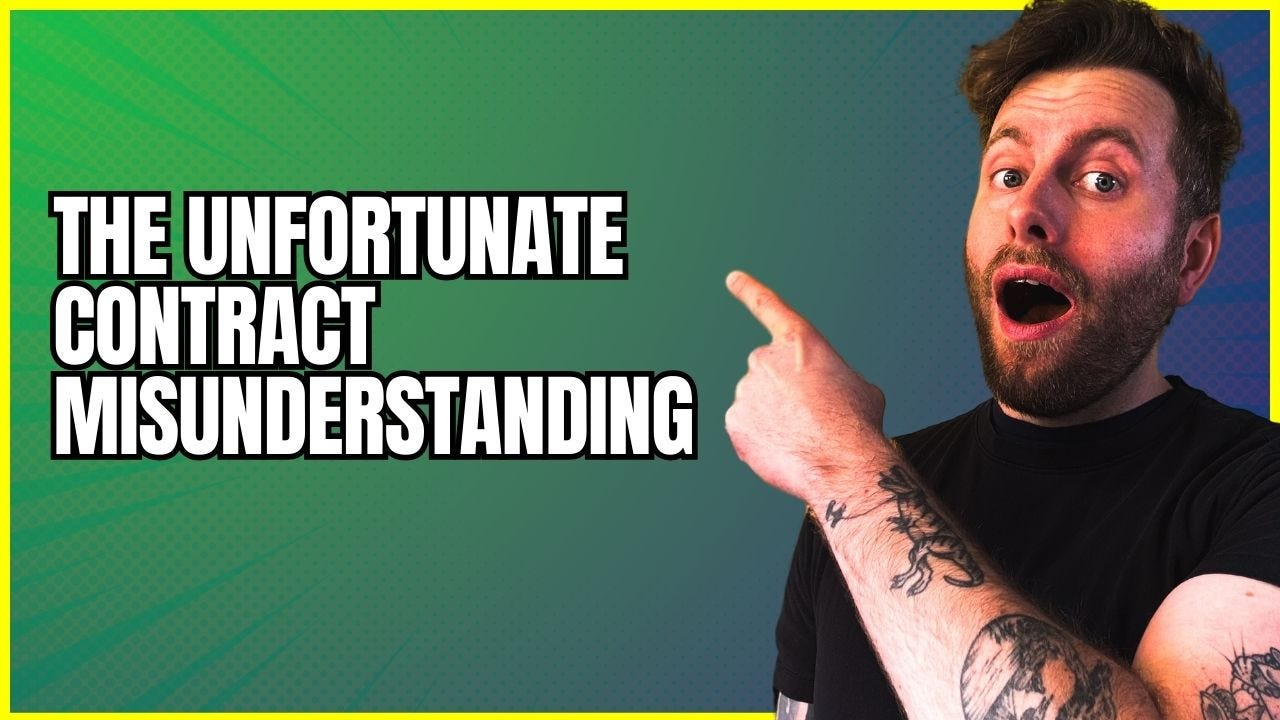I find it incredibly interesting when I talk to anyone about cont
racts. There’s a general idea about them, such as what they do and look like. Additionally, there are many misconceptions about them.
I had some eye-opening comments on a recent LinkedIn post. I don’t mean this negatively at all. I genuinely had a plethora of comments on a post about contracts. You should check it out here. But I’ve picked on these 4 in particular to share some observations of mine.
“SOW is part of a contract not considered a contract in itself technically”
“Financially stable?”
“Too numerous to list - just like the industry bodies that promote their own particular versions (the contract industry with quals and training is big business). These produce only 'standard' forms which of course will be amended in your favour by expensive QS's or you can go for a bespoke contract written by a very expensive lawyer.”
How about Declaration or Conflict of Interest
So, as I sip on my oat milk flat white like any millennial worth their salt, I invite you to do the same. Grab a drink, have a read, and hopefully, learn something, or at the very least, find something that you don’t quite agree with and let’s discuss it in the comments 👇
While you’re here, make sure you download the Contract Management Cheat Sheet I recently shared in high-res (because that’s a thing with documents these days—social compresses images way too much).
What is a Contract?
When I studied law at college (prior to University), one of the first areas we covered was “Contracts”. This was a fairly basic overview. When I started University, I deep dived into Contracts, how they’re made, and what constitutes a contract for about 6 months. I poured over case law, textbooks, and other sources to really “nerd out” about contracts.
Here’s a basic definition from English law as to what a contract is and how it’s made up.
A contract under English law is a legally binding agreement between two or more parties. It can be made in writing, verbally, or through conduct. For a contract to be valid, it generally needs four key elements:
Offer: One party proposes specific terms to another.
Acceptance: The other party agrees to those terms.
Consideration: There must be something of value exchanged between the parties, such as money, goods, or services.
Intention to Create Legal Relations: The parties must intend for the agreement to be legally enforceable, and the parties must have the capacity to enter into the contract.
It’s fairly basic stuff when you see it like this but each of these points have hundreds of years of case law behind them that make this somewhat more complex in England and Wales (and the entire UK).
But why is this point relevant to you.
English common law has had a significant global impact, influencing the legal systems of over 80 countries. This influence extends primarily through former British colonies and Commonwealth nations, where the principles and structures of common law were introduced and adapted.
Countries like the United States, Canada, Australia, India, and New Zealand are prominent examples of jurisdictions that have adopted and developed legal systems rooted in English common law.
Keep reading with a 7-day free trial
Subscribe to The AI Procurement Blueprint to keep reading this post and get 7 days of free access to the full post archives.




